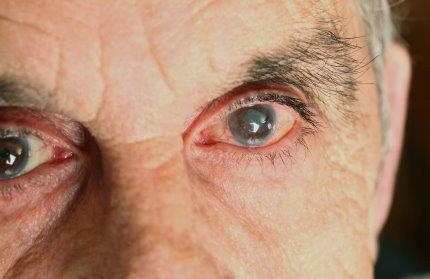Posted by: Metrolina Eye Associates in Cataract Surgery

A cataract is a clouding of the eye’s natural lens that occurs over time due to aging, certain diseases such as diabetes, certain medicines, smoking, family genetics and injury. Everyone who lives long enough gets cataracts at some point in their life. Key advances in cataract surgery now provide surgeons with exciting, potentially life-changing treatment options for patients with cataracts.
Unfortunately, there is no eye drop or medicine that can clear up a cataract. The only treatment that can “cure” a cataract is cataract surgery: a 10 minute, outpatient procedure in which the eye’s cloudy lens is replaced with a lens implant. Patients typically spend only two to three hours at a surgical facility, and most can go back to work and drive the next day! Cataract surgery is one of the most common and successful procedures performed in this country.
In the past, the term “ripe” was used to describe a cataract that required surgery. This is an outdated term and concept. Today, surgery is indicated when a cataract affects any activity of daily life. The most common symptom of an early cataract is difficulty driving at night. Other symptoms may include difficulty reading, glare at night or in bright lights, general cloudy vision, or glasses that just don’t seem “right.” My average age for patients undergoing cataract surgery is 65 years.
The last several years have brought two key advances to cataract surgery. First, patients and surgeons can now choose the type and “quality” of lens implant that is placed in the eye. These “premium” lenses can provide better quality of vision at distance, near, or distance AND near without glasses or contacts. These lenses have been used successfully for many years and there are many patients for whom these lenses have changed their lives!
The latest and most exciting advance in cataract surgery, however, has been the introduction of Laser Cataract Surgery. In traditional cataract surgery, the entire procedure is performed manually, using metal blades and a bent needle followed by ultrasound. In laser cataract surgery, a computer guided laser is used to make bladeless incisions into the eye, “peel” an opening into the cataract, and even break up the cataract into tiny pieces, all in a comfortable and relaxed setting. The laser provides the surgeon more precision during a cataract operation versus the surgeon using only his or her hands. Furthermore, significantly less ultrasound can be used to remove the clouded lens following laser treatment of a cataract. Studies suggest that laser cataract surgery may be “gentler” on the eye.
Finally, and most exciting of all, using the laser, the cataract procedure can be custom tailored to the patient’s unique eye. Certain “errors” in the shape of the eye, which are not normally treated in the traditional procedure, can be treated at the time of the cataract removal. By treating these errors, patient’s dependence on glasses may be significantly reduced or eliminated while providing the best possible vision!
Cataract surgery, premium lens cataract surgery, and laser cataract surgery are all highly precise procedures that, just like any other operation, are not without risks. Patients should have a long discussion about all of their options before cataract surgery and about the specific risks and benefits that come with each operation. A cataract is a very common condition that is a normal part of aging. With recent advances in cataract surgery, patients have more treatment options than ever before that can provide not only life-changing improvements in vision but also significant improvements in overall quality of life. To learn about all of the advances in Cataract Surgery and to see what option might be best for you, or if you are suffering from any eye condition contact Metrolina Eye Associates today.


